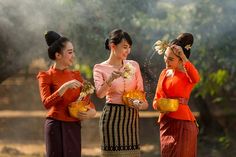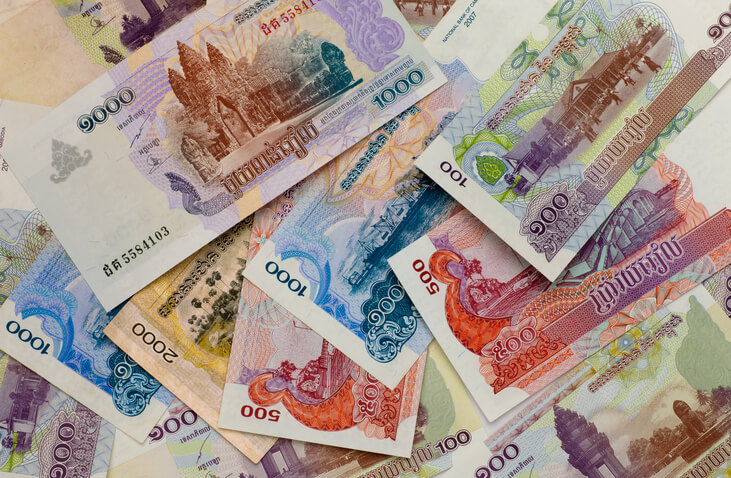The myth of the lost ruins of Angkor is more suited to an Angelina Jolie film than the history books. The story more or less begins with their being “rediscovered” by Western explorers in the 19th century, beginning with the French botanist Henri Mouhot who stumbled across Angkor Wat in 1860. Few remember though that Mouhot was led to the site by a Khmer guide and that when he arrived, he found a flourishing Buddhist monastery within the temple grounds.
During the Khmer Rouge period, the ruins were largely left to their own devices. Like most Khmers, even Pol Pot was unable to shake the power of the site, saying in 1977, “If our people can make Angkor, they can make anything.”
Never lost, lost then found, found then lost then found again—today it doesn’t really matter. With thousands of people visiting daily, the sprawling Angkor Park remains a see-at-least-once-in-your-life destination.
Angkor refers to the entire 400 square kilometre Archaeological Park, a UNESCO World Heritage Site packed with historic temples, hydraulic structures such as reservoirs, ancient highways and forest. Angkor Wat is the iconic temple with lotus-like towers at the heart of the park while Angkor Thom is the ancient walled city, with its 54 mesmerizing “face towers”, is a truly remarkable site within the Angkor Thom complex. Every facet is carved with a large mystic appearance, the shadow of a smile on its lips, assumed to be that of King Jayavarman VII, the most productive architect of the Khmer temples. What looks like a chaotic pile of giant rocks is, in fact, a labyrinthine of corridors, stairways, and colonnades that delight the senses. Each of the 37 surviving towers is adorned with four serene heads even more surreal at sunset.
Banteay Srei
This small, delicate temple, approximately 15 miles from Siem Reap village, was built by Jayavarman V and finished in 968 AD. Banteay Srei, meaning “Citadel of the Women,” is a Hindu temple dedicated to Shiva. It is said the temple must have been built by a woman, as the elaborate carvings are too fine for the touch of a man. The carvings are breathtaking in their delicacy. Comprised of several buildings, Banteay Srei features some very beautiful three-dimensional filigree relief work in pink sandstone. Almost every inch of the buildings are covered in decoration, most with delicate apsaras (heavenly dancers) with lotus flowers in their hands. This is among our favorite temples!
Baphuon
One of the few Hindu temples within Angkor Thom’s gates, Baphuon dates back to the 1060s and was recently reopened after a lengthy restoration. Located northwest of the Bayon, the temple represents Mt. Meru (sacred to Hinduism). Built in the western face of the Baphuon is a giant reclining Buddha, added in the 15th-century, after the region converted from Hinduism to Buddhism.
Churning of the Sea of Milk
The massive “Churning of the Sea of Milk” bas-relief, which stands apart for the quality of its carving, ingenious composition, and the impressive measures conservators have taken to ensure its longevity. The relief depicts an ancient Indian story. Lord Vishnu cajoles demons (asuras) and gods (devas) into working together to produce an elixir of immortality they both covet. They churn the waters of the cosmic ocean using a sacred mountain as a pivot and a supernatural, five-headed snake as a rope.
Elephant Terraces
This impressive 8.5 foot wall, with its carved elephants and giant garudas that adorn it, spans the heart of Angkor Thom. Garudas are mythical creatures resembling birds found in both Hindu and Buddhist mythology.
Kbal Spean
Kbal Spean is a less visited Hindu-archaeological site that we feel is an ideal setting for light hiking. Set deep in the jungle, the amazingly carved riverbed is referred to as the “River of 1,000 Lingas”. You will see many Hindu deities dotted around the area with “lingas” (Shiva) elaborately carved in the riverbed. Kbal Spean was just recently discovered by Western eyes in 1969 when ethnologist Jean Boulbet was shown the area by a local hermit. Following years of civil war, the site became open to the public in 1998. An approximately 1.2 mile/2 km uphill walk to the carvings, the winding path is very nice. Don’t miss the outstanding carvings of Vishnu in the upper section of the river!
Phnom Bakheng
The first temple-mountain constructed in Angkor with a commanding hilltop location is an extremely popular spot for sunsets. The final climb to the top of the temple is steep and very dangerous at dark. Elephants will carry you to the hilltop for a fee but the temple stairs you still have to climb on your own. When to visit: A hike up Phnom Bakheng affords fine sunset views of Angkor Wat. It is misty and mysterious and gives you a sense of jungle and forest vegetation.
Frequently Questions Are Being Asked About Angkor Wat
1. Which Experiences Are Best For Tours In Angkor Wat?
These experiences are best for tours in Angkor Wat:
SIEM REAP-THE LAND OF MEMORIES (4DAYS)
ANGKOR STOPOVER TOUR (2DAYS)
ANGKOR IMPRESSIVE TOUR (4DAYS)
2. What Are The Best Places Plus With Tours In Angkor Wat?
These places are the best combine with Angkor Wat.
CAMBODIA-ROYAL ROUTE (7 DAYS)
CAMBODIA IMPRESSIVE TOUR (5DAYS)


.jpg)




.jpg)








.png)











